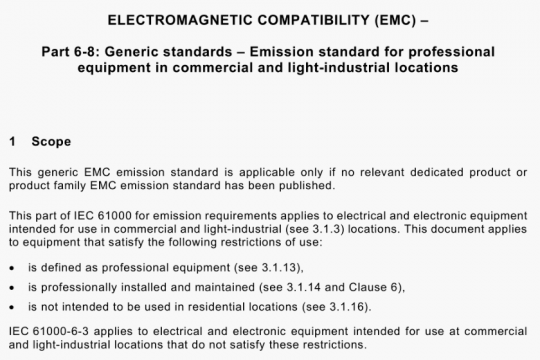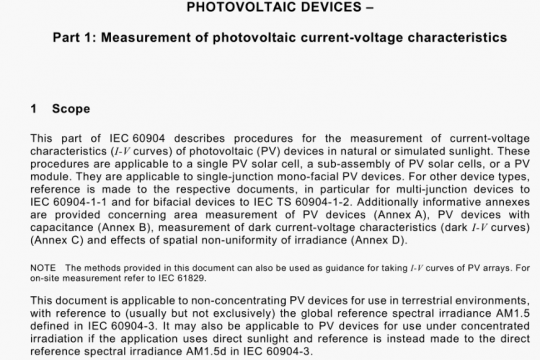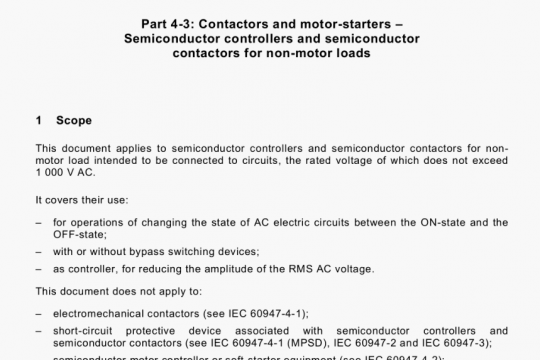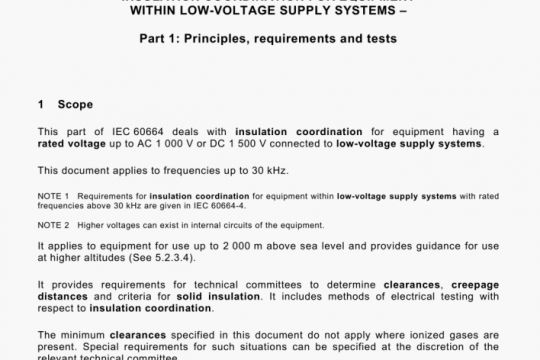IEC TS 60747-19-2-2021 pdf free
IEC TS 60747-19-2-2021 pdf free.Semiconductor devices – Part 19-2: Smart sensors – Indication of specifications of sensors and power supplies to drive smart sensors for low power operation.
The following documents are referred to in the text in such a way that some or all of their content constitutes requirements of this document. For dated references, only the edition cited applies. For undated references, the latest edition of the referenced document (including any amendments) applies.
There are no normative references in this document.
3 Terms and definitions
For the purposes of this document, the following terms and definitions apply.
ISO and lEG maintain terminological databases for use in standardization at the following addresses:
• lEG Electropedia: available at http://wwwelectropedia.orgi
• ISO Online browsing platform: available at http://www.iso.org/obp
autonomous power supply
standalone power supply with batteries and (or) energy harvesters obtaining energy from the so-called ambient energy sources, such as light, vibration, thermal, or biological sources
4 Indication of specifications of low-power smart sensors
4.1 Datasheet description of current consumption — time characteristics
In order to realize a low-power smart sensor allowing an autonomous power supply operation that is the target of this document, clarifying power consumption characteristics of the smart sensor to its users is significant. Therefore, its current consumption-time characteristics and information regarding its operation conditions should be described in the datasheet of the smart sensor.
An example of this description in the datasheet is shown in Figure 3. Namely, current consumption-time characteristics during the starting and continuous periodic (intermittent) sensing operations should be described. In Figure 3, the following seven values should be described: current consumption period during the starting operation (‘st)’ peak current consumption value during the starting operation (‘stak)’ peak current consumption value during the sensing operation (loppeak), average current consumption value during the sensing operation (1opave)’ standby current consumption value (1standby)’ current consumption period during the sensing operation (t). and the sensing operation cycle time
Furthermore, the current consumption-time characteristics should be quantified at least for the following two conditions: (1) a typical condition where the applied supply voltage is the typical voltage and the operating temperature is the room temperature, and (2) the worst condition where the applied supply voltage is the maximum voltage within the supply voltage range and the operating temperature is the highest within the operating temperature range. Herein, the “worsr condition refers to the condition where the power consumption is the highest within the sensors recommended supply voltage range and operating temperature range. The operating temperature may be substituted for the ambient temperature.
In Figure 3, where the characteristics are shown for each condition, the values of the supply voltages and operation temperatures for each condition should be described. If the characteristics vary among the operation parameters including the operation modes, each characteristic should described for each parameter. Herein, descriptions using tables or values may be used and listed if the required information to be described is fully satisfied. Table 1 is a datasheet description example for the consumed current.
A practical example of a datasheet description of specifications of the smart sensor is shown in Annex A.IEC TS 60747-19-2 pdf free download.




